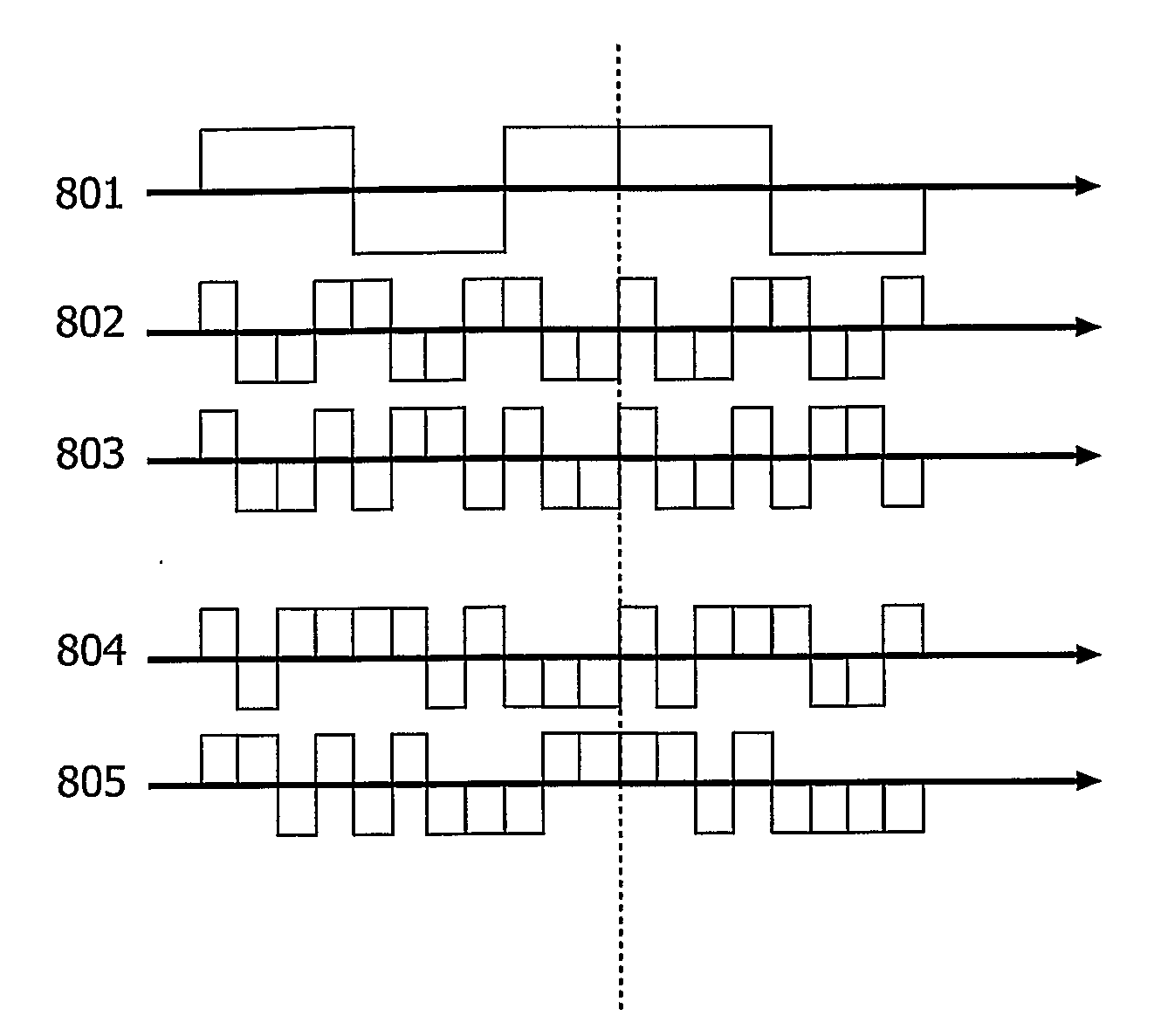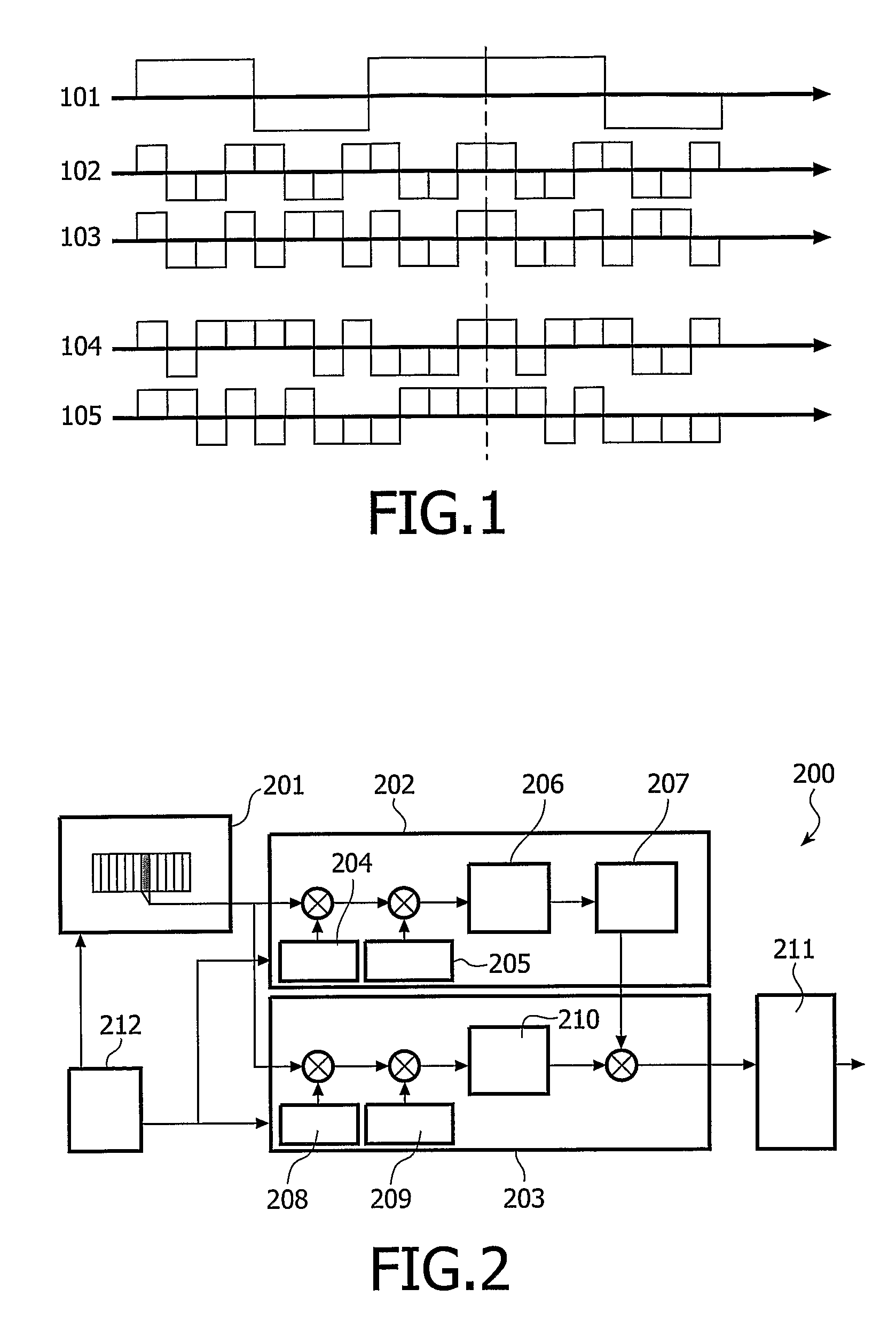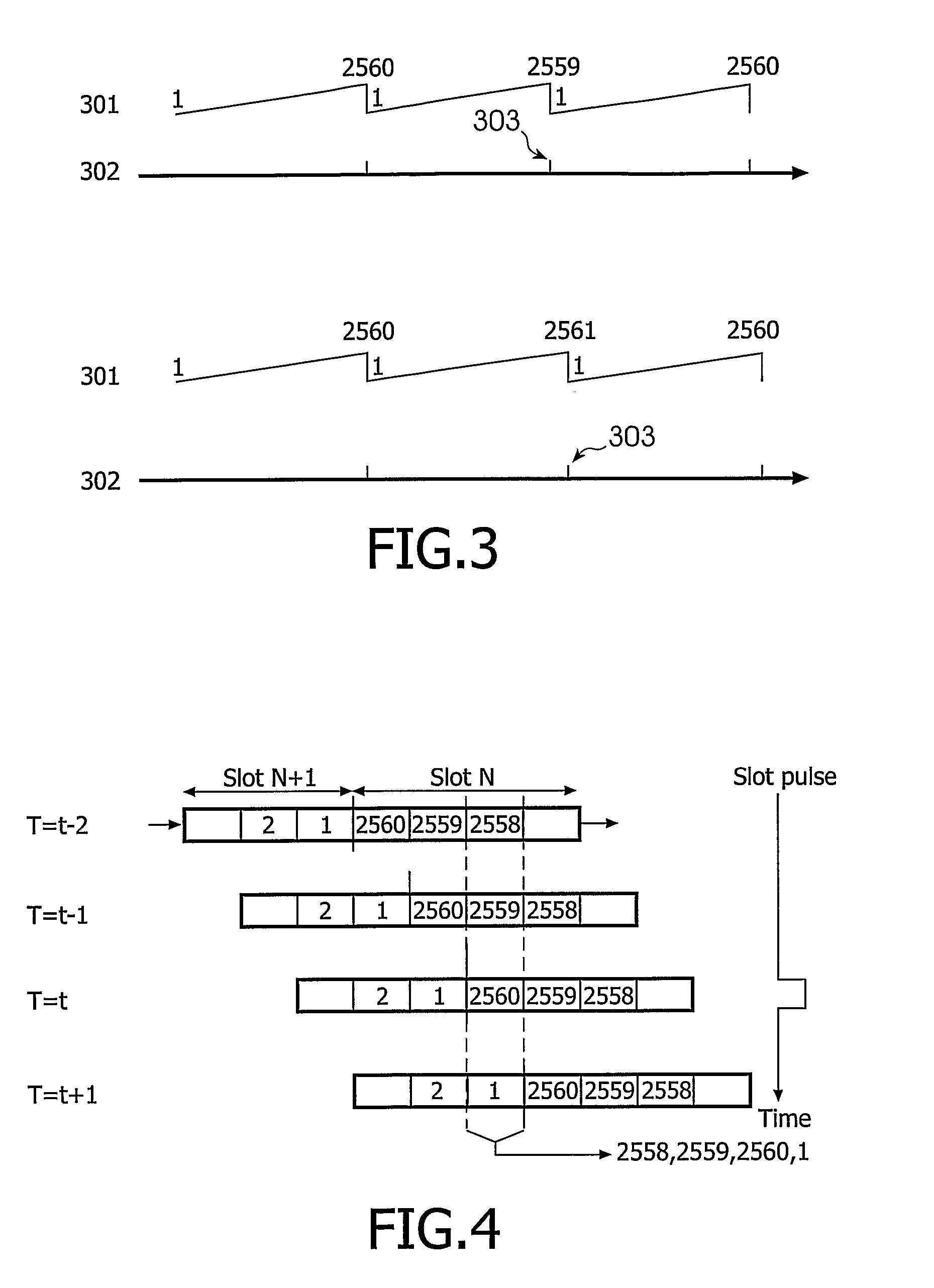Umts receiver symbol synchronization
a receiver and symbol technology, applied in the field of umts receiver symbol synchronization, can solve the problems of high complexity of the process, still arise, and the path characteristics vary with tim
- Summary
- Abstract
- Description
- Claims
- Application Information
AI Technical Summary
Benefits of technology
Problems solved by technology
Method used
Image
Examples
Embodiment Construction
[0040] In UMTS, spreading is used at the transmitting side, i.e. at the base station, to translate each symbol into a sequence of bits. Each symbol is multiplied with a spreading code comprising N bits, or chips, per symbol. The number N of chips in the spreading code is typically known as the spreading factor (SF). The value of SF varies from 4 to 256 depending on the data channel, but in case of the pilot channel employed in the mobile phone receiver, SF is set to 256. FIG. 1 shows the spreading of five symbols 101 with a spreading code 102 having SF=4. The resulting code is shown at 103. Thereafter, each chip is modulated with a scrambling code 104 over a sequence of 38400 chips. FIG. 1 shows the first 20 chips of the scrambling sequence. The chips, after having been subject to spreading and scrambling, are shown at 105. The dotted line indicates a slot boundary.
[0041] Thus, a two-stage modulation technique is employed at the receiver. A prior art receiver is schematically shown...
PUM
 Login to View More
Login to View More Abstract
Description
Claims
Application Information
 Login to View More
Login to View More - R&D
- Intellectual Property
- Life Sciences
- Materials
- Tech Scout
- Unparalleled Data Quality
- Higher Quality Content
- 60% Fewer Hallucinations
Browse by: Latest US Patents, China's latest patents, Technical Efficacy Thesaurus, Application Domain, Technology Topic, Popular Technical Reports.
© 2025 PatSnap. All rights reserved.Legal|Privacy policy|Modern Slavery Act Transparency Statement|Sitemap|About US| Contact US: help@patsnap.com



